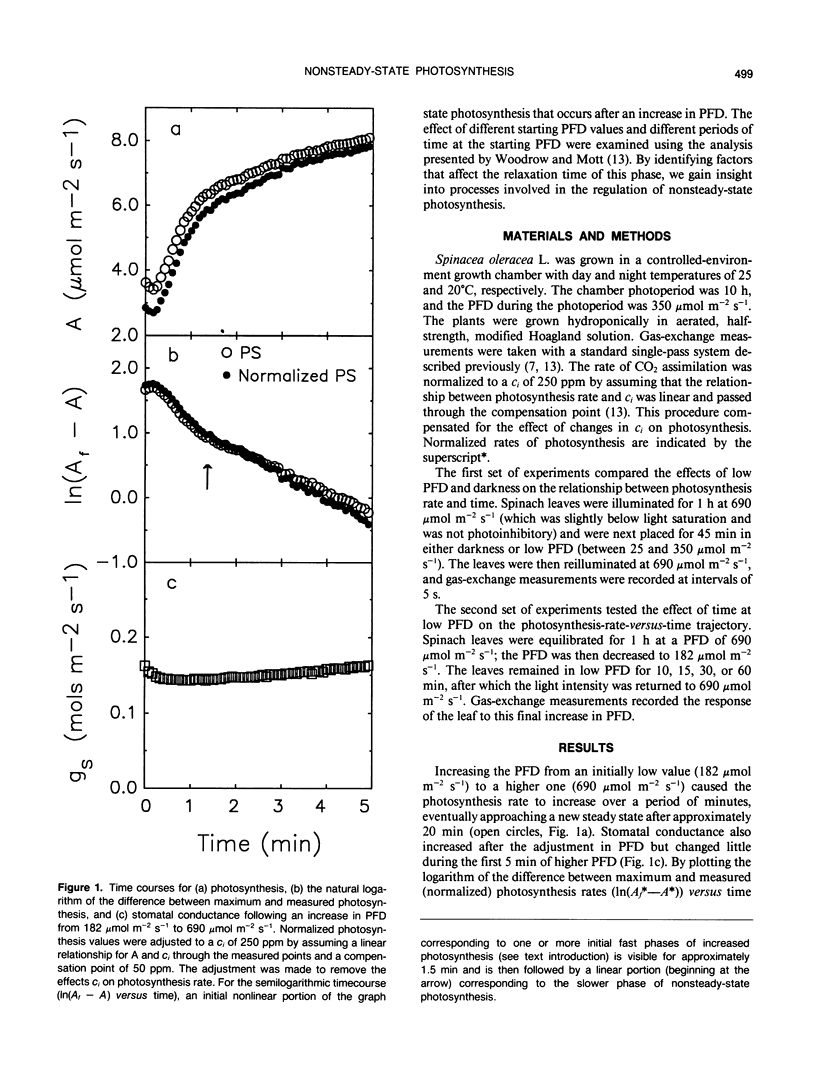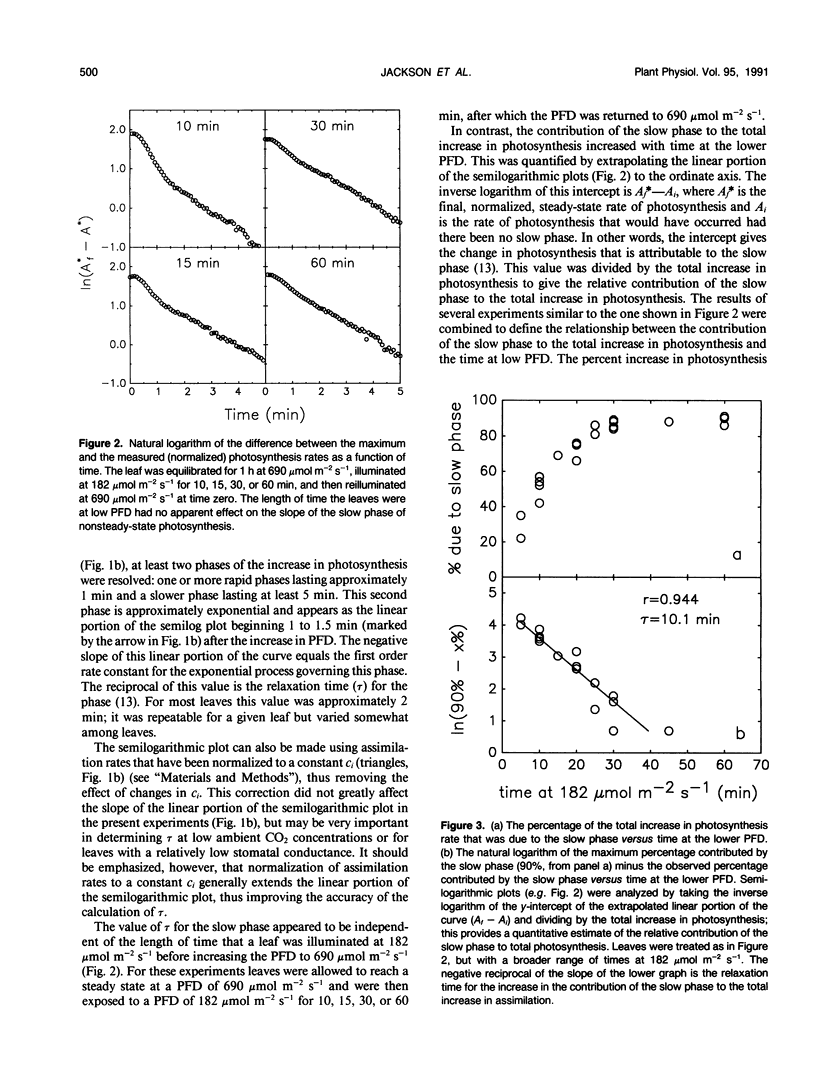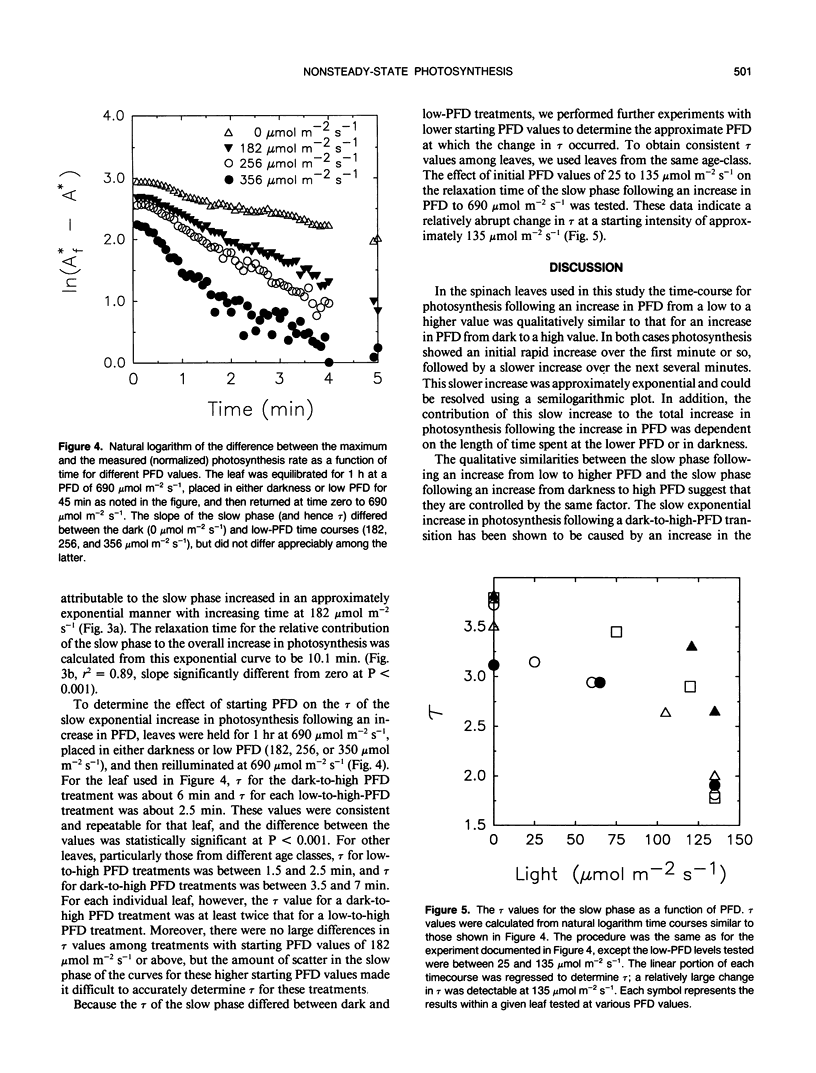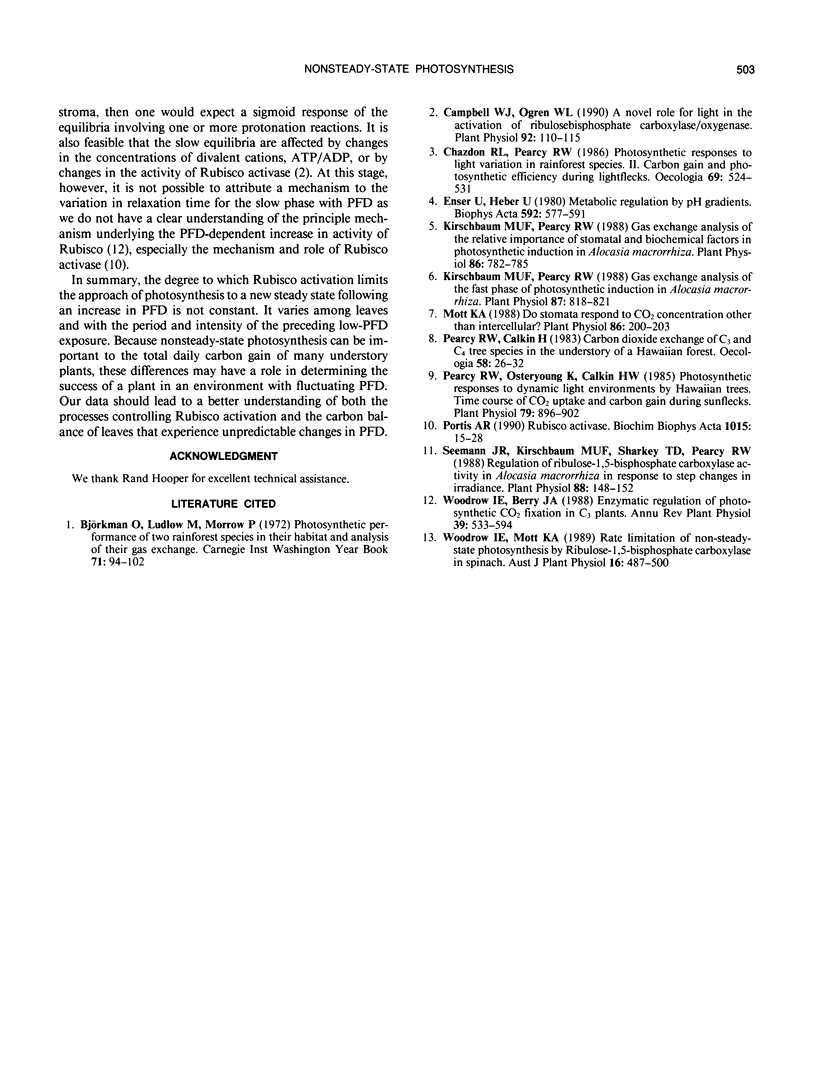Abstract
The response of photosynthesis to an increase in photon flux density (PFD) from low to higher PFD was investigated using spinach (Spinacia oleracea L.). The time-course for this response was qualitatively similar to that observed for a dark-to-high-PFD transition, showing an initial, rapid increase in photosynthesis over the first minute or so, followed by a slower increase lasting 5 to 10 minutes. This slow increase was approximately exponential and could be linearized using a semilogarithmic plot. The relaxation time (τ) for this slow phase was found to be a function of the starting PFD value. At starting PFD values below approximately 135 micromoles per square meter per second (including darkness), τ for the slow phase was approximately twice that observed for starting PFD values above 135 micromoles per square meter per second. This indicates a slower approach to steady state for leaves starting at PFD values below this threshold and a greater loss of potential photosynthesis. τ was relatively insensitive to starting PFD values below or above this transition value. The contribution of the slow phase to the total increase in photosynthesis following a low-to-high-PFD transition increased approximately exponentially with time at the lower PFD. The τ for the increase in the contribution of slow phase was determined to be 10.1 minutes. The implications of these data for activation and deactivation of ribulose-1,5-bisphosphate carboxylase/oxygenase and for the functioning of the leaf in a fluctuating light environment are discussed.
Full text
PDF





Selected References
These references are in PubMed. This may not be the complete list of references from this article.
- Campbell W. J., Ogren W. L. A novel role for light in the activation of ribulosebisphosphate carboxylase/oxygenase. Plant Physiol. 1990 Jan;92(1):110–115. doi: 10.1104/pp.92.1.110. [DOI] [PMC free article] [PubMed] [Google Scholar]
- Enser U., Heber U. Metabolic regulation by pH gradients. Inhibition of photosynthesis by indirect proton transfer across the chloroplast envelope. Biochim Biophys Acta. 1980 Oct 3;592(3):577–591. doi: 10.1016/0005-2728(80)90102-4. [DOI] [PubMed] [Google Scholar]
- Kirschbaum M. U., Pearcy R. W. Gas Exchange Analysis of the Fast Phase of Photosynthetic Induction in Alocasia macrorrhiza. Plant Physiol. 1988 Aug;87(4):818–821. doi: 10.1104/pp.87.4.818. [DOI] [PMC free article] [PubMed] [Google Scholar]
- Kirschbaum M. U., Pearcy R. W. Gas Exchange Analysis of the Relative Importance of Stomatal and Biochemical Factors in Photosynthetic Induction in Alocasia macrorrhiza. Plant Physiol. 1988 Mar;86(3):782–785. doi: 10.1104/pp.86.3.782. [DOI] [PMC free article] [PubMed] [Google Scholar]
- Mott K. A. Do Stomata Respond to CO(2) Concentrations Other than Intercellular? Plant Physiol. 1988 Jan;86(1):200–203. doi: 10.1104/pp.86.1.200. [DOI] [PMC free article] [PubMed] [Google Scholar]
- Pearcy R. W., Osteryoung K., Calkin H. W. Photosynthetic Responses to Dynamic Light Environments by Hawaiian Trees : Time Course of CO(2) Uptake and Carbon Gain during Sunflecks. Plant Physiol. 1985 Nov;79(3):896–902. doi: 10.1104/pp.79.3.896. [DOI] [PMC free article] [PubMed] [Google Scholar]
- Portis A. R., Jr Rubisco activase. Biochim Biophys Acta. 1990 Jan 4;1015(1):15–28. doi: 10.1016/0005-2728(90)90211-l. [DOI] [PubMed] [Google Scholar]
- Seemann J. R., Kirschbaum M. U., Sharkey T. D., Pearcy R. W. Regulation of Ribulose-1,5-Bisphosphate Carboxylase Activity in Alocasia macrorrhiza in Response to Step Changes in Irradiance. Plant Physiol. 1988 Sep;88(1):148–152. doi: 10.1104/pp.88.1.148. [DOI] [PMC free article] [PubMed] [Google Scholar]


